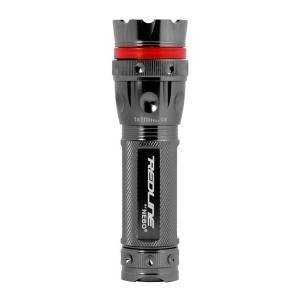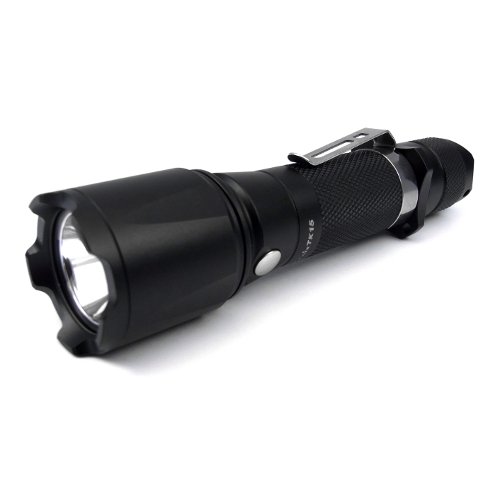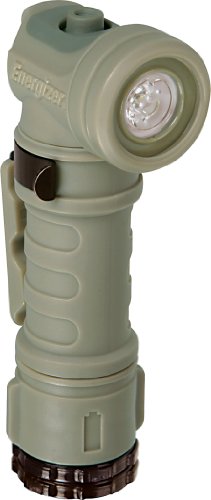
Nebo Redline Tactical Flashlight Strobe S.O.S 220 Lumen #5581
Nebo Redline Tactical Flashlight Strobe S.O.S 220 Lumen #5581
Posted on by admin

You May Also Like
More From Author
100 Survival Items You Forgot To Buy
November 22, 2024
Clever Gifts For the Reluctant Preppers in Your Life
November 22, 2024
Roughneck mortar gun review
November 22, 2024
3Comments
Add yoursComments are closed.








![[New Arrival] Cocoweb Portola 650 Lumen Tactical Torch Flashlight LED Focus Light](https://survivalism.turnkeywebsitesales.com/wp-content/uploads/2014/10/d808b_tactical_41ScRhncLrL1.jpg)










Versatile, Compact Design, and It Produces a Whole Lot of Light.,
If there was any lingering question, this Redline flashlight from Nebo is a testament to how far LED technology has come. Gone are the days when LED flashlights put out only a fraction of the light of incandescents. This compact flashlight, 4 3/8 inches long and 1 3/8 inches in diameter, puts out 220 lumens of white lights and has 5 modes. You can use it at 220 lumens, 110 lumens, 22 lumens, SOS mode, or strobe mode. The SOS (Morse code) and strobe might be handy for emergencies if you carry the flashlight in the car. At 220 lumens, the flashlight produces an amazing amount of light that can illuminate my entire living room. The 22-lumen mode is good when you want to find your way without disturbing everyone around you with a blinding light.
The Redline also has a 4x adjustable beam, which is adjusted by turning a bezel near the front of the light. Nebo claims that the focused spotlight will shine up to 150 yards. It has a nifty ring around the front that glows red when the light is on. I can’t see that it serves any purpose, but it looks nice. The button to turn the flashlight on and off and to change modes is on the back. The button glows in the dark -at least enough so that you can see it. Unfortunately, the button is recessed, which makes it impossible to depress it with my thumb while holding the flashlight. If I want to turn the light on with one hand, I have to depress the button with my index finger. This might not work if you have big hands. A button that protrudes would be preferable.
When you first turn the flashlight on, it is in the bright 220-lumen mode. You cycle though the modes by turning the flashlight on and off in rapid succession. This can be inconvenient. In order to get the flashlight to come back on in bright mode, you have to wait about 15 seconds. If you turn the flashlight off and on again before that, it will come on in the next mode in the succession rather than the full light. Also, if you tend to use the flashlight in a less-light mode, as might be appropriate if you use it primarily in your home, you have to cycle through every time to find your mode. You can’t set it to come on in the mode you use most often. That and the recessed power button detract somewhat from the Redline’s ease of use.
The flashlight takes 3 AAA batteries (included). It will last 4 hours at 220 lumens, 8 hours at 110 lumens, 15 hours at 22 lumens, and up to 72 hours in strobe or SOS mode on full battery power. The body is waterproof and made of anodized aircraft-grade aluminum. It does hold the temperature around it well, so it can get pretty cold or hot in your glove compartment. The back end of the flashlight is magnetic, which allows hands-free illumination in some situations. The LED bulb will last 110,000+ hours. At first I thought the Redline might be overpriced, but it is well-made, offers a lot of options and a lot of light. In my experience, most compact flashlights last only a few years. If the Redline proves itself more durable, it will have been well worth the money.
Was this review helpful to you?

|Maybe the brightest light available for the price! But…,
Customer Video Review Length:: 2:13 Mins
It falls short in other areas.
If you are looking for a very bright light that doesn’t cost too much then stop reading, don’t watch the video, and click “Add to Cart”. You won’t be disappointed.
This light appears attractive for two characteristics:
1) It’s “tactical”; and
2) It’s a lot of light (220 lumens claimed) for a reasonable cost (around $25).
The problem is, it’s not really a tactical light and you can get lights that are almost as bright for far less.
The accompanying video does two things. First, using a “real” tactical light, it shows features found on a typical tactical light that is widely used in tactical situations. Granted, the sample light costs several times more than the Nebo and that the reality if you are looking for a light that is tactical in more than its name.
The second part of the video provides a beam comparison between the Nebo and a TechLite Lumen Master High-Intensity Tactical LED Flashlight 3-Pack. That light is only rated at 160 lumens and you can buy three of them for the cost of one Nebo. The Nebo beam is brighter and you’ll have to decide if it’s brighter enough to cost three times as much.
Two minor points… First, the magnetic base on the Nebo is not quite strong enough to reliably secure the light either horizontally or hanging down from something metal. Second, in an effort to provide a complete, fair, and balanced review I got two Nebo lights, one month apart. They were different and that could explain some of the other reviewer comments. The first one came loose in an envelope and was not as bright as the second one. I used the brighter light in the output comparison.
Bottom line: If you want a tactical light you will have to spend more, if you want a bright light you can spend far less. Otherwise, for your $25 you get a light that is bright and has the word “Tactical” printed on the package.
That said, please feel free to stick around and read a bit more while I hop on my…
Lumen Soapbox:
I remember when transistor radios were first introduced. Consumers used the “number of transistors” as a, and frequently the only, measure of quality. Producers of cheap, low quality electronic equipment (which at the time was Japan) began building radios to use as many transistors as possible. Transistors replaced less expensive diodes and additional amplifier stages were incorporated (increasing the size while decreasing battery life and sound quality) all in the name of upping the transistor count.
A more recent example is digital camera “megapixels”. This has become a metric of choice. Many people believe the more megapixels the better the camera and, by inference, the better the images it captures. Megapixels can be a determining factor in how much you can enlarge a picture and I suggest an 8×10 with nice color, good contrast, appropriate sharpness, and no lens distortion is better than a poorly rendered 16×20 or larger print.
So what does this have to do with Lumens, you ask. Just that measuring (flash)light output is tricky business and lumens aren’t the only factor to consider. For example, a laser pointer of even average quality puts out lots of lumens. Ever try to find something in the dark using one? For this light the beam needs to be set at a fairly narrow focus to achieve its maximum output. Depending on your application, the “lumens” may need to be spread out over a wider area. There’s an example of “less lumens can be more light” in my video review of the Joby Gorillatorch Flare Adjustable and Flexible Tripod Flashlight.
BTW, I feel that honest, effective reviews, accompanied by detailed videos, can take the place of first-hand experiences that are often lacking in online shopping. I’ve always appreciated the help I’ve received from other reviewers and try to return the favor as best as I can. I hope you found this review helpful and the video at least entertaining. If there was anything you thought was lacking or unclear leave a comment and I’ll do what I can to fix it.
Was this review helpful to you?

|Great Light,
This has to be the best light for the price range. You can always find something better but your going to pay 2 to 5 times more. At 220 lumens and if the air is calm and not dusty I could to almost see up to 200 yards. For the money and what I received I am 100{660353129f8d892044c993645a1c75194301fec6786a7f617c15adde0b0011e9} happy and would recomend to anyone.
Was this review helpful to you?

|